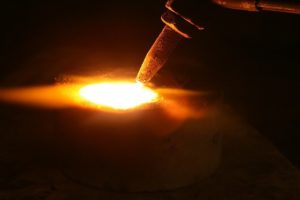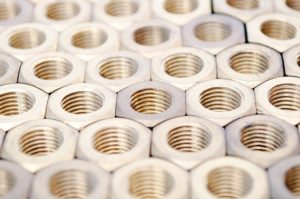Have you ever wondered why the handful of metals you are familiar with are in fact the rarest ones? Gold, silver, bronze, even platinum aren’t particularly the most common of metals. Unlike steel and iron, you don’t see a lot of them inside your home, in the streets outside, or in the workplace. They are simply very rare, and that’s because they are difficult to unearth and manufacture, which is also why they have higher monetary values than more common metals.
One of them, however, even though prized similarly, is actually very common. Not in a sense that you can see it everywhere, but certain components of many everyday objects are made from it. That metal is bronze. You’ve probably heard of it at least once or twice. You probably even know what it looks like and how it’s metallic brown color sets it apart from the rest of more pleasant-looking metals. But I’d bet you know only a few object that are legitimately made of bronze.
What is bronze?
Bronze is an alloy of copper and tin. Its composition varies but most of today’s bronzes are made of around 80 percent copper. Other elements, such as manganese, aluminum, nickel, phosphorus, silicon, arsenic, or zinc, to produce different types of bronze, each having a unique set of useful properties. Here are some of the most common types of bronze produced by adding an extra element to the original alloy.
Aluminum Bronze.
When you mix about 6 to 12 percent aluminum into the original copper-tin mixture, you produce a stronger and more corrosion-resistant bronze, called aluminum bronze. Aluminum is well-known in the construction and mechanical field for its many valuable properties, including high diffuse reflectivity, low secondary heat emission factor, tolerable toxicity range, and reasonable heat and electrical conductivity. All of these properties are adopted by bronze right after the alloying.
Nickel Silver.
Despite not having the word “bronze” in its name, nickel silver is actually a type of bronze. It consists of bronze, tin, and nickel. And despite having the word “silver”, this type of bronze actually doesn’t contain silver. The silver only refers to the metal’s silvery color, which is not characteristic of bronze. This vast difference in appearance is one of the main reasons why identifying products or objects made of bronze can be quite difficult. That’s mainly because consumers are accustomed to seeing bronze as the brown metal.
Phosphor Bronze.
Adding a miniscule quantity of phosphorous can make bronze incredibly strong. It can increase bronze’s yield and tensile strength several times, depending on how much of it you add to the mixture. Ideally, only between 0.01 and 0.35 percent of phosphorous should be added to avoid turning the strength into brittleness. Apart from strength, phosphorus also helps improve bronze’s fatigue resistance, durability, and coefficient of friction. This is what makes phosphor bronze highly suitable for applications that involve constant and rapid sliding of metal surfaces.
Silicon Bronze.
Known for its easy pouring ability, appealing surface finish, and superior corrosion resistance, silicon is almost the perfect alloying metal. Silicon also happens to fit perfectly into the bronze alloy. Even if only about 6 percent of the entire bronze alloy is made of silicon, it is enough to give bronze the self-lubricity it needs to be easily formed or cast into different shapes and intricate details.
Manganese Bronze.
Manganese can make bronze hard and strong as well. This allows bronze to handle high-load, low-speed applications, which originally are among its few weaknesses. The high bearing strength manganese endows, however, also turns bronze into a non-heat-treatable metal, which is why special lubrication is needed for applications involving the use of manganese bronze.
While each type of bronze has a unique set of properties thanks to the extra element they contain, there are certain properties that they have in common. These are the properties that determine the plethora of uses of bronze metal.
Hardness.
Although bronze is an excellent material for sculpting, it is one of the hardest copper alloys around. Its hardness depends on the proportion of its original content and the additional element it has. Nevertheless, it can withstand pressures ranging from 35,000 psi to 119,000 psi. The hardest of all types of bronze is manganese bronze as it can hold up to the maximum tolerable pressure.
High Melting Point.
Unlike other copper alloys, bronze doesn’t melt very easily. It would take up to over 2000 degrees Fahrenheit of heat to melt bronze. What’s astonishing about this property of bronze is that it gives us a clue as to how resourceful our ancient ancestors were. It’s amazing how they were able to produce heat of that scale using primitive methods to product bronze, and they were able to repeat the process over and over.
Corrosion Resistance.
Having constituents that are all resistant to corrosion, it’s not surprising bronze is corrosion resistant as well. It doesn’t rust like iron or steel and some of its types, such as Muntz metal, can even hold up to saltwater, which is ten times more corrosive than tap water. Instead, it forms a layer of protective finish called patina. This is common among copper alloys.
What are the uses of bronze?
Bronze has seen a sizeable decline in utilization ever since steel and other metals with more suitable construction applications had been discovered. Then again, bronze has evolved to become useful in many other applications, thanks to the metallurgists who have spent their lifetime exploring the virtually limitless potentials of this metal. Here are some of the most common uses of bronze.
Art.
Perhaps the most popular use of bronze is in art, particularly as a base material for sculpture. It is the material of choice for sculptors specializing in metals because of its amazing property, which allows it to slowly expand as it cools down. Although heavy and dense, bronze is quite easy to work, allowing sculptors the freedom to chisel at their hearts’ content.
Construction.
Despite being superseded by steel in an array of construction-related applications, bronze still preserves its place in some of them. For instance, many movable bridge components, wheels in worm drives, and turntables for bridges are made of a certain type of bronze. Modern safety tools such as hammers, mallets, and wrenches, are also made of a type of bronze. These tools were originally made of steel, but because of the risk of fire or explosion caused by the unsafe sparks steel can make, steel was replaced with bronze.
Machine Design.
There are a score of machine parts that are best made of bronze—spur gears, bushings, bearings, valve components, and even valve guides in aircraft engines, all thanks to its high electrical conductivity, thermal resistance, and low-friction properties. Not very many metals exhibit low-friction qualities, which is very crucial in settings where parts slide against each other at a high rate.
Now that you have at least basic knowledge of bronze, we suppose you already know your way around it when you plan on using it for any of your future projects. Of course, the success of those projects also depends on the quality of the bronze materials you will use. Always partner with a supplier who not only specializes in copper alloys like bronze but also has their own foundry. It pays to have a bronze tube and bar supplier who can provide you with the highest quality materials you need anytime.




